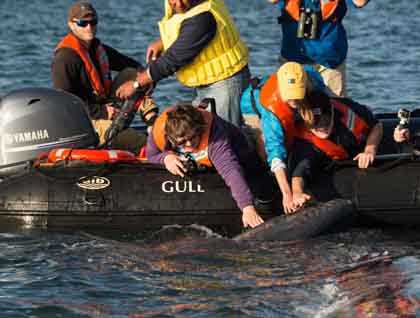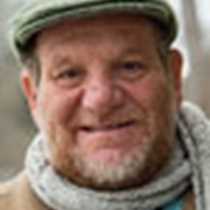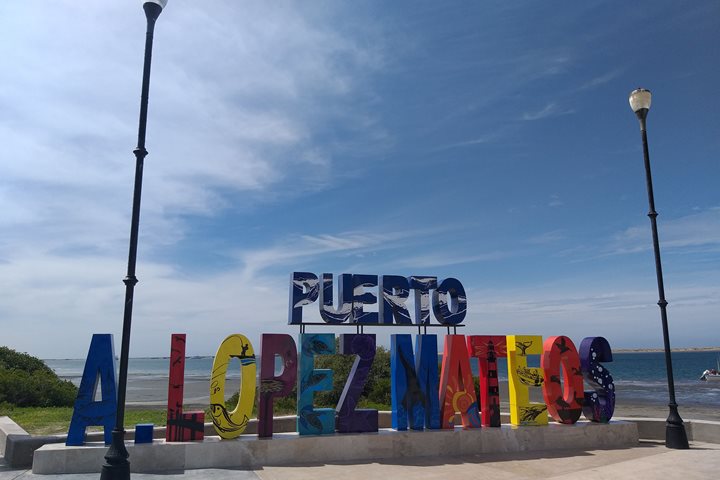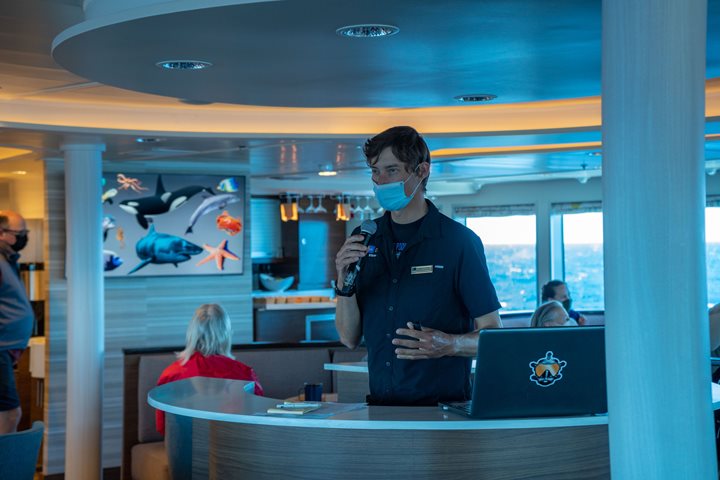People pet their pets, they pet farm animals, we have contact with many types of animals, however, we are not supposed to have contact with whales. We have nearly caused their extinction, and the brutality we have wrought upon them is unspeakable. How is it then that a female whale would allow her calf less than two weeks old to nuzzle up to our inflatables and allow us to pet her child?
What can they be thinking? These mammals—who live in the sea—are so different from us. Yet, every year in the breeding lagoons of Baja California Sur the wildlife spectacle of the birthing of whales occurs. Soon, after a few weeks, the mother whales allow their offspring to approach boats that carry people. It is possible that in the memory of some of these whales is the image of other people who came to see them in boats. Those people did not carry cameras, they carried harpoons. The carnage they wrought is unthinkable, yet the whales have given us another chance. Now, as the season progresses, they stop the routine of swimming their young to exercise their muscles, and allow the curiosity that is in all young mammals to surface. What can they be thinking?
For us it may begin as a novel idea, petting a whale. Then, once the great whale approaches, we understand how small we are. With pause and we reach out, the excitement is indescribable, a hand slowly reaches down into the cool water, and for the first time, we touch a whale. The whole thing may last but a moment, or it may last many minutes, but that is only the physical experience. There is another experience, one felt inside someplace within our being. In those few moments of contact, our lives are changed.
During the course of our time aboard National Geographic Sea Bird we will have many exciting and unbelievable events happen. We will see beauty and grandeur, we will make new friends, all of these things are worth the time spent to do them on their own merit. However, when all is said and done, it will be this day that will stand alone, today, we touched a whale.







